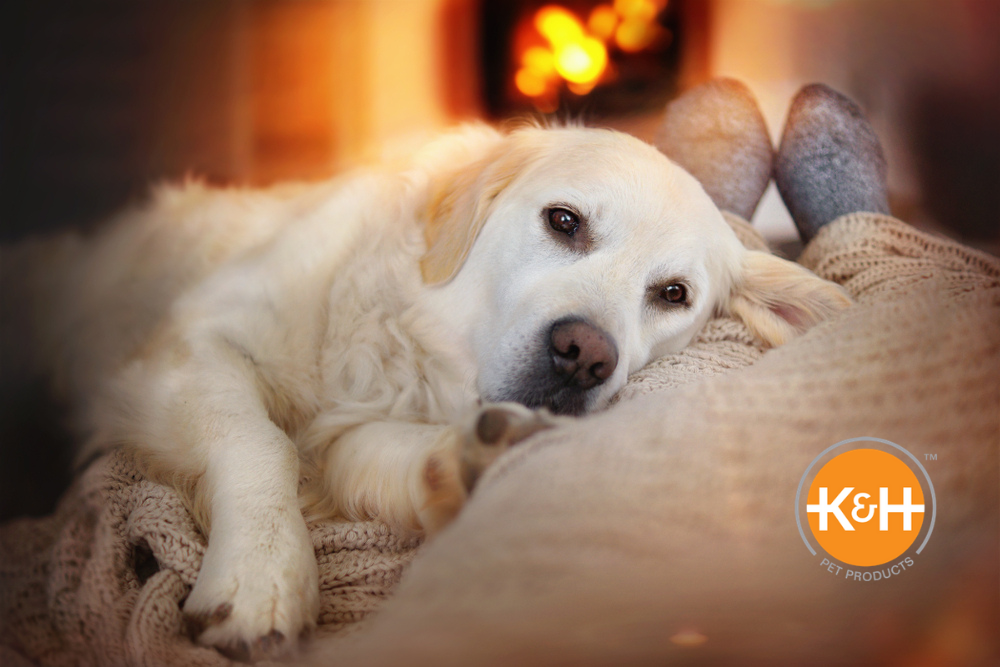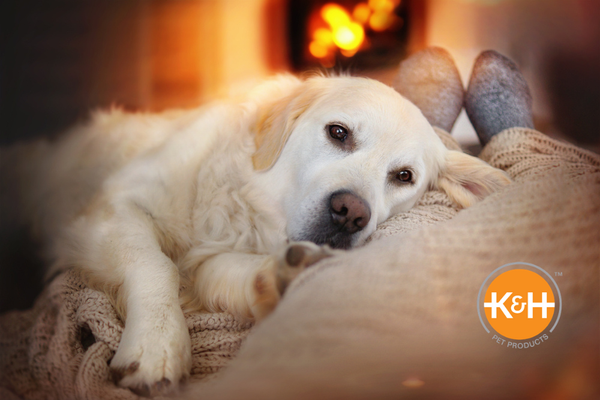
Your Pets & Electrical Safety
During the holidays, as the weather gets colder and you're using even more electrical products than usual, it's important to know if your pets' electrical items are properly safety tested. This means understanding what to look for when researching a product's safety listing and what it means. All 120V electrical K&H Pet products, for example, are rigorously MET safety tested and certified. But how do you know what that looks like? How can you make sure you and your pet are using the highest quality products?

Home Fires Increase in the Winter
One reason electrical safety is so important is that home fires increase in the winter months.1 Many of these fires are caused by heating equipment and other electrical products. It's critical to make sure the products you get for your cat or dog don't just have safety-listed parts but are actually safety-listed themselves.
Watch for Misleading Products Sold Online
MET is an accredited lab that certifies millions of products to UL and CSA standards for both the United States and Canada.2 It is an OSHA-licensed Nationally Recognized Testing Laboratory.3
However, some sellers might be sneaky and offer a product that looks like it's more rigorously tested than it truly is. A company might advertise a product as being safety-recognized when in reality, only some of the components were tested—not the entire product.4 In other cases, a counterfeit logo might be used.
Unfortunately, some online sellers might not adhere to a high safety standard for their products. So it's important to look into the specific safety listing and description for any electrical product you use and make sure the entire product is safety tested, not just some of the parts.
MET Labs suggests avoiding counterfeits or improperly tested products by only purchasing from reputable sources, examining documentation and products for proper certification marks, and avoiding products that use out-of-date codes or are missing owner's manuals.5 You should also examine the product's quality and avoid anything that seems "too good to be true." If you have the MET Listing Number, you can verify it with the Safety Certification Database.6
K&H Pet Products Are Safety Tested
All 120V electrical K&H Pet products are MET safety tested and certified before being sold to the public. On any 120V K&H electrical product description, you'll notice a safety section pointing out that it has been tested and certified by MET Labs (e.g., see the description for the K&H Pet Bed Warmer).
For example, the heated pet beds are designed to be left plugged in 24/7, as they are MET Lab certified for meeting strict electrical safety standards. (If you're going on a long vacation, of course, you want to unplug them.) Two more K&H Pet products that are MET-tested include the Deluxe Lectro-Soft Outdoor Heated Bed and the Thermal-Bowl.
Always Read the Instructions
Even when purchasing MET-tested products, it's still important to read the instructions and safeguards on all electrical products. Improper use of electrical products can create catastrophes, like fires or electrical shock. The instructions will tell you where you can use the product, whether it needs close supervision, and the best way to use it. For example, some heated pet beds may work better if you don't put other blankets on them. Additionally, you may want to avoid using an extension cord; MET notes that extension cords should only be a temporary solution for any electrical product and are not a long-term solution for use.
The winter months are a great time to snuggle up with your cat and dog. Or, you can set out an electrically heated pet bed to keep your pet warm and happy. Just make sure you're using a properly safety-tested product to avoid fire hazards.
1. ESFi. "Seasonal Safety." ESFi.org, https://www.esfi.org/seasonal-safety#.
2. Eurofins. "Benefits of Switching to MET." MetLabs.com, https://www.metlabs.com/services/product-safety-testing/met-product-safety/.
3. Eurofins. "How Does Met Compare to UL?" MetLabs.com, https://www.metlabs.com/services/product-safety-testing/met-vs-ul/#.
4. Rose, Bruce. "What is the Difference Between UL Listed and UL Recognized?" CUI.com, 19 June 2018, https://www.cui.com/blog/what-is-the-difference-between-ul-listed-and-ul-recognized.
5. Eurofins. "Product Safety." MetLabs.com, 6 December 2012, https://www.metlabs.com/product-safety/five-tips-for-avoiding-counterfeit-electrical-products/.
6. Eurofins. "Safety Certification Database." Corp.MetLabs.com, https://corp.metlabs.com/metsafety/.
